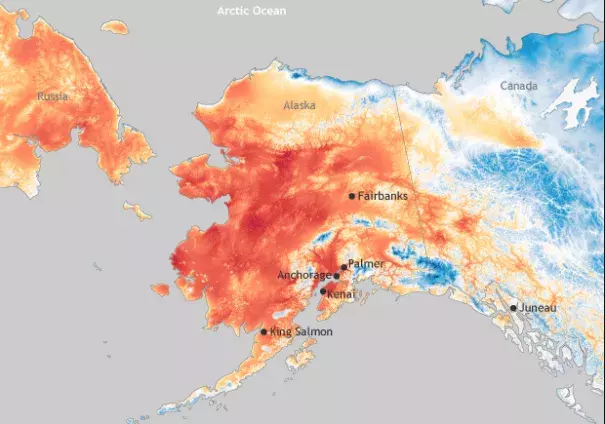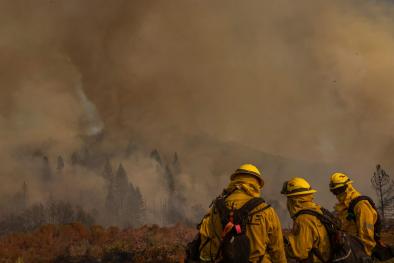High temperatures smash all-time records in Alaska in early July 2019

Starting on the Fourth of July and lasting multiple days, temperatures across Alaska were 20 to 30 degrees above average in some locations. On July 4, all-time high temperature records were set in Kenai, Palmer, King Salmon, and Anchorage International Airport. The airport reached an astounding, for Alaska, 90°F, breaking the previous all-time record by 5°F! The average temperature in Anchorage during summer is normally in the mid-sixties. Anchorage, Talkeetna (which saw a July record daily high of 93°F), and King Salmon also observed their warmest week on record.
And the anomalous Arctic heat has not been short-lived. Through July 10, Juneau saw the high temperature reach at least 70°F for a record 17 consecutive days. In Anchorage, the highs have reached 80°F for a record six consecutive days, doubling the previous record. And three of those days broke or tied the previous all-time record! The average high temperature from June 27 through July 8 was nearly 81°F, 5.5°F higher than the previous 12-day record. There’s out of the ordinary, and then there is what has been happening in Alaska.
...
These drastic changes to the environment in Alaska, tied to human-caused climate change, have cascading effects throughout the Arctic. The lack of sea ice can lead to increased storm surges, coastal flooding and erosion. The changing shorelines have already forced some communities to relocate.
Warm summers and ice-free seas can negatively impact marine mammals, fish, and crabs. For example, warm summers negatively impact the survival rates of young fish species like walleye pollock. Such conditions in the past have led to lowered catch limits for pollock—the nation’s largest commercial fishery. The fish prefer a large summer cold pool of water at the bottom of the Bering Sea. Warm summers shrink this cold pool, jeopardizing young pollock's ability to survive through the following winter. The lack of ice allows the ocean and atmosphere to interact more, which can exacerbate ocean acidification; this drop in ocean pH due to the absorption of carbon dioxide which can affect marine mammal habitats, and the growth and survival of fish and crabs.
A warming climate also is likely to increase the number and size of wildfires across the state, degrading air quality and increasing smoke inhalation, both threats to human health. The cost of a warming climate for Alaska is projected to be between $3 to $6 billion between 2008 and 2030, according to the National Climate Assessment.
Related Content



